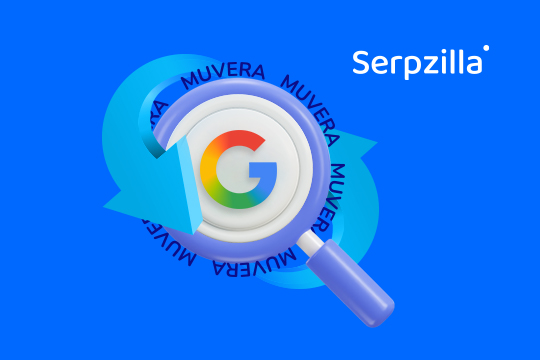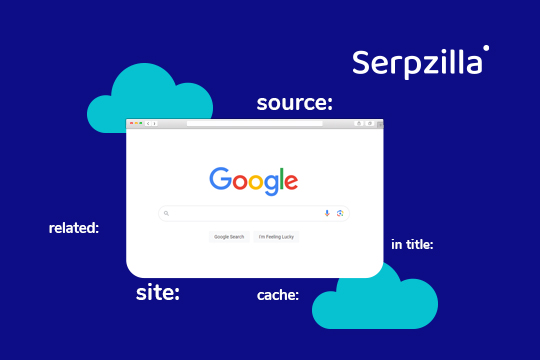Introduction
A SEO copywriter doesn’t just create content that has your users’ attention. It’s also content that is given a higher rank in search results.
The process of creating this type of written text entails balancing between creating a nice, engaging read and including all the elements that help your SEO.
It goes far beyond the mere task of popping the appropriate keywords here and there. A good SEO copywriter knows exactly what your audience wants, crafts content they love, and makes Google get it too.
When you find that balance, your website can go from invisible to a traffic magnet!
My name is Connor Gillivan and in this blog, I’m sharing my go-to 21-step SEO copywriting checklist—the same strategies that have helped my own businesses and clients boost traffic, increase engagement, and drive results.
Let’s jump in!
What Is SEO Copywriting?
SEO copywriting is writing for two audiences at once: one is your actual readers and the other is search engines.
Your readers want to see fun, useful, valuable and reader-friendly text. Google wants to see the right keywords, structure, and formatting, UX-worth and other things that help it match your text to user searches.
How Does SEO Copywriting Affect Your SEO Rankings?
Actually, very directly. On the one hand, the rank Google appoints to your text is greatly influenced by what Google decides about how well the text matches user queries you’re optimizing for. On the other hand, if your users like the text, you’ll get plenty of organic traffic – a.k.a. the best kind of traffic.
Google’s algorithm is designed in such a way that it strives to pick the best content for searchers. Thus, if your material is properly written, interesting to readers, and packed with keywords in the appropriate areas, it will command better SERP rankings.
If they immediately like the text you’ve written once they have followed it from a search engine, users are more likely to stay on your site, interact with it, and share your content with others.
Ultimately, good SEO copywriting creates a win-win: it delivers a much better UX and increases your chances of ranking higher.
After 15+ years of scaling businesses with SEO and managing SEO for 25+ clients at TrioSEO, I’ve seen what works—and what doesn’t.
Here’s some results I’ve gotten for my clients:
My Ultimate SEO Copywriting Checklist
Below, I’ve broken down the 21 key steps I follow when creating high-ranking content that will bring organic search traffic to your page.
If you’re more intrigued by SEO and want to learn how my system works, you can check out my carefully created SEO course.
Now let’s dive into the checklist:
#1: Add the Primary Keyword to Your URL
The URL to your text is the first thing that is looked at, by Google and your readers alike. The simplest and the most effective way to let both search engines and Google know what this text is about, is to include your most important keyword or phrase in the URL itself.
For example, if your keyword is “SEO copywriting checklist,” an optimized URL might look something like – www.yourwebsite.com/seo-copywriting-checklist
This step is especially important for SEO since shorter, keyword-rich URLs tend to rank higher. Plus, concise URLs are easier for users to read and remember. This takes us to my second step.
#2: Keep Your URL Short and Concise
Speaking of URL length—keep it short! URLs under 60 characters perform better in search engines and improve user experience.
For instance, instead of using a long URL like:
www.yourwebsite.com/blog/this-is-our-ultimate-guide-to-seo-copywriting-checklist-for-2024
Try to find one-word descriptions, short and spot-on, if there’s a word or a phase you can get rid of – do it. Don’t include unnecessary descriptors, just the gist of it.
It’s not just SEO best practices, it is visually more attractive, looks cleaner and will perform better in SERP and in social media shares too.
#3: Put the Keyword at the Front of the Title Tag
Title tags get a lot of weight when Google ranks your page, so use them wisely. It would be a good idea not to just include your important keyword in the title, but place it somewhere up front.
Here’s an example:
- Good: “SEO Copywriting Checklist: 21 Tips to Rank Higher”
- Not so good: “21 Tips for Ranking Higher with an SEO Copywriting Checklist”
That slight difference can greatly impact your ranking potential because Google sees the keyword earlier and places more emphasis on it.
#4: Include the Keyword in the Meta Description
Meta descriptions may also affect rankings and impact click-through rates. Adding the keyword makes it more likely that searchers will click on your link.
A good meta description for this checklist might be: “Looking for an SEO copywriting checklist that works? These 21 steps will help you boost rankings and drive more organic traffic.”
This makes your description more relevant, appealing to searchers, and aligned with search intent.
#5: Add Keyword Synonyms to Meta
Google is smart enough to recognize variations of a keyword. Instead of overloading your meta tags with the same keyword, use related phrases and synonyms.
For example, let’s say your “SEO copywriting tips”. When optimizing for it, try to come up with as many variations as possible to avoid overusing direct-match keywords. This will also help you cover as many related searches as possible, since people often tend to phrase their searches slightly differently. Try variations like “SEO copywriter” or “SEO writing strategies” in your meta tags.
#6: Use the Keyword in the First Sentence
It is also good for the primary keyword to appear early in your content. To do this, use it in the introduction of the blog. Just be careful not to “stuff” it in just for the sake of it being there.
Be creative and think of the first line of your blog as the “hook”. A one to two liner that really captures the reader and essence of the content ahead.
If readers don’t find confirmation in the very first lines of your text that it’s what they’re searching for, they will hit the close button. Similarly, Google uses the first lines to confirm that your text is relevant to a particular search query.
#7: Put Keyword in H1s, H2s, H3s
Your headings (H1, H2, H3) are key indicators of what your content is all about. Make sure some of your headers include your primary keyword.
For instance, your H1 could be “SEO Copywriting Checklist,” and your H2s could break down individual steps with variations of your main keyword, like “SEO copywriting tips” or “on-page SEO checklist.”
A structured article signals relevance to both users and search engines.
#8: Optimize Images With Alt Tags
Images are important for both user engagement and SEO. Add alt text to every image with a description that includes relevant keywords.
Alt tags describe images for search engines and help with accessibility, ensuring your content is available to all users.
For example, if you’re using an image about SEO tips, the alt text could be “SEO Copywriting Checklist Infographic.”
Just be careful to write the alt text so that it’s 100% accurate to what the image is all about. Don’t go stretching it so that you can include a keyword. That’s not best practice.
#9: Include Keyword Cluster Terms
It’s no longer enough to target one keyword per page. Now, you need to focus more on keyword clusters which are groups of related terms that Google can recognize as part of the same topic.
For example, if your main keyword is “SEO copywriting,” your content should have terms like “on-page SEO,” “content optimization,” and “meta descriptions.”
Using a variety of terms ensures your content ranks for multiple search queries.
#10: Add 5+ External Links
Search engines value content that connects to other highly authoritative websites. Linking to those websites signals to any search engine that your content is well-researched and credible.
I strongly recommend including at least 3-5 external links to relevant sources, such as studies or expert articles.
For example, if you mention keyword research, link to a trusted SEO tool like Moz or Ahrefs.
#11: Internal Link to 5+ Pages
Internal linking helps Google scan through your site and understand the relationships between different pages. Aim to link to at least five other relevant pages on your website within each piece of content.
Take, for instance, if you’re discussing SEO tips, link to related topics like “how to conduct keyword research.”
Not only does this help with SEO but also keeps on your site longer by encouraging them to explore more of your content.
#12: Make Your Text Readable on Mobile
As of 2024, over half of all Google searches are done using a mobile device, according to statistics. This is the main reason behind Google’s switch to ‘mobile-first’ mode of indexing pages. If your text reads and looks nice on a phone, you get extra points. If it doesn’t, well, you may lose both readers and Google’s favor.
Always make sure your content is responsive, meaning it looks great on any device, whether it’s a desktop, tablet, or smartphone.
#13: Test and Improve Website Speed
Page speed is a ranking factor, and slow load times can drive users away. Use tools like Google PageSpeed Insights to identify ways to speed up your site.
Simple fixes like image compression and enabling browser caching can make a big difference. You’d be amazed and how fast you can speed up your website with a few small tweaks or by downloading a free plugin.
#14: Avoid Keyword Stuffing
Overloading your content with keywords can hurt your SEO. Instead, focus on using your keyword naturally. Try repeating the same term and mix in related phrases as well.
Repeating “SEO copywriting checklist” over and over, for example, doesn’t just let Google know that you’re intentionally optimizing for it (and may well be over-optimizing). It also reads unnatural to your users and you may see them dropping off in this case.
Google algorithms pick up on keyword stuffing very well today, so you may easily be looking at an algorithmic penalty, if you continue with it.
#15: Hit Search Intent
Every piece of content should answer the user’s search query. Understand what your audience is looking for—are they trying to learn, solve a problem, or make a purchase? Craft your content around their intent.
You should be able to achieve their end goal and make them content with your answers thoroughly.
#16: Nail the Hook
You’ve only got a few seconds to capture your reader’s attention, so your introduction needs to hook them immediately.
Start with a bold statement, a surprising statistic, or a compelling question. Something like, “Did you know that 75% of people never scroll past the first page of Google results?”
Think of it like the first line of a social media post. People’s attention spans are SO short these days. You’ve got to “stop the scroll” on social media so that they click that “Read more” link. Apply the same logic with the hook of your SEO content.
#17: Use Bullet Points and Numbered Lists
Readers (and Google) love structured content. Break up long sections of text with bullet points and numbered lists to make your content easier to skim.
This is especially important for ranking in Google’s featured snippets, where lists and bullet points often appear.
Use bullet points or numbered lists to highlight key information, like this checklist!
#18: Eliminate Large Paragraphs
Large chunks of text can overwhelm readers. Keep your paragraphs short, like three to four sentences. This will help improve readability and help keep your users engaged with the content.
Ultimately, short paragraphs lead to better on-page time (how long users stay on your site), which will eventually generate better rankings.
#19: Add Relevant CTA Offers
Always include a clear call of action (CTA) that guides your reader to the next step.
Whether downloading a free guide, signing up for a newsletter, or scheduling a consultation, a strong CTA increases conversions.
For example – “If you’re ready to take your content to the next level, download our free guide on crafting high-converting blog posts! Start boosting your engagement today.”
#20: Include Stories and Real Experiences
Adding personal stories or real-life examples makes your content more relatable. People connect with stories, so whenever possible, weave real experiences and case studies into your content.
Real stories show the potential impact of SEO copywriting, helping readers see the value it could bring to their own businesses.
#21: Ask: “How Could it be Better?”
After writing, always ask yourself: “How could this be better?” Could you include more examples, add data, or tighten the intro?
Constantly improving your content will keep it competitive over time. Your content will not lose its credibility if you are always on the path to improve yourself.
With this guide on my side, I’ve helped multiple businesses scale to 6, 7, and 8 figures with SEO. One example is when I helped Freeup grow from 0 to 12 million in revenue in just 4 years.
Final Tips for SEO Copywriting
SEO copywriting isn’t a one-and-done task.
It requires constant refinement, but by following this SEO copywriting checklist, you can create content that ranks well and resonates with your audience.
Whether optimizing for on-page SEO, off-page SEO, or building a website SEO checklist, these steps are tried and true.
Save this, make your own version of it, and use it for all of your SEO content before it goes to publishing.
If you work with an SEO team or with an SEO Writer, share it with them as well so that they can learn and implement these steps into your SEO content.
Summary
Crafting content that ranks well on Google and grabs readers’ attention can be a bit demanding. However, with these 21 copywriting strategies, all that is possible.
Let’s start a conversation if you’re ready to drive growth with SEO-backed content that gets results. Reach out for our article writing services at TrioSEO, and let’s make your content work harder for your business.









